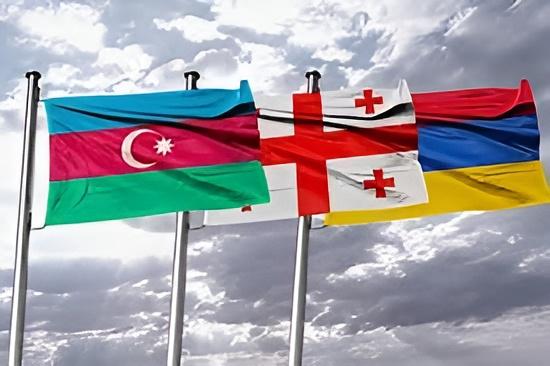South Caucasus: Emerging Hubs of the New Silk Road




The South Caucasus region, historically a crossroads of empires and trade, is once again stepping into the spotlight as a pivotal area on the New Silk Road. Known for its rugged geography and strategic positioning, this dynamic frontier of opportunity sees Georgia, Azerbaijan, and Armenia all staking their claims to become indispensable gateways for east-west trade routes, creating a complex mix of rivalry and collaboration that shapes the modern commercial landscape.
Georgia's geographical position between the Caspian and Black Seas provides a strategic edge that makes it an essential link in the Middle Corridor, facilitating the movement of goods from Central Asia to European markets. Despite having comparatively modest port facilities, Georgia's Poti and Batumi ports are becoming increasingly vital nodes for Eurasian trade, handling over 20 million tons of goods annually and serving as crucial conduits for containers, energy products, and agricultural commodities.
The ambitious East-West Highway project, supported by international financial institutions including the World Bank and European Union, is transforming the region's infrastructure landscape. This highway network, slicing through Georgia's mountainous terrain, promises smoother passage for trade and fortifies the country's role as a key connector between East and West. The Baku-Tbilisi-Kars railway adds a strategic rail link to Turkey, effectively bypassing traditional Russian routes and providing alternative transit options for regional commerce.
Plans to revitalize the stalled Anaklia deep-sea port project have rekindled significant investor interest, with projections suggesting capacity to handle up to 100 million tons annually. This development could dramatically elevate Georgia's status as a dominant Black Sea trade hub, transforming its territories from mere transit zones into strategic lifelines for international commerce.
Azerbaijan stands as the economic powerhouse of the South Caucasus region, leveraging its substantial energy wealth and advanced Caspian port facilities to anchor its position in the evolving Silk Road network. The Alat Port near Baku serves as a pivotal junction for east-west trade, connecting ferry services to Kazakhstan and Turkmenistan while undergoing major expansions to become a comprehensive free-trade zone with enhanced logistics centers and digital customs systems.
Azerbaijan's railway networks are experiencing unprecedented growth in cargo volumes, driven by rerouted shipments seeking alternatives to Russian transit routes. The surge in rail freight and containerized traffic underscores Azerbaijan's expanding role as a critical transit hub, with the Caspian Sea effectively functioning as a transit lake connecting Asia to European markets through Azerbaijani infrastructure.
The country's extensive pipeline infrastructure, including the Baku-Tbilisi-Ceyhan oil pipeline and the Southern Gas Corridor, not only enhances trade flows but also fortifies Europe's energy security matrix. These energy links from the Caspian to Europe reduce dependency on Russian energy supplies while cementing Azerbaijan's relevance in multiple strategic sectors. Azerbaijan's adept geopolitical maneuvering, successfully balancing partnerships with Turkey, China, and European Union members, demonstrates its sophisticated approach to maintaining crucial relationships across different power centers.
Though geographically constrained by closed borders with Turkey and Azerbaijan, Armenia navigates its challenging position through remarkable creativity and diplomatic acumen. The country has successfully established a vital trade route with Iran, creating the Persian Gulf-Black Sea corridor that enables goods to flow from Iran to European markets via Armenian and Georgian territory, providing Armenia with a crucial economic lifeline.
Armenia's bilateral commerce with Iran continues growing, enhancing its strategic corridor positioning and demonstrating the country's ability to leverage its southern connection effectively. The Armenian-Iranian linkage serves as more than just a trade route; it represents Armenia's determination to remain relevant in regional commerce despite significant political and geographic obstacles.
The visionary "Crossroads of Peace" initiative exemplifies Armenia's strategic ambitions to transform from what might otherwise be a transit cul-de-sac into a genuine bridge connecting diverse regions. This framework aims to revitalize Soviet-era transportation links and enhance regional connectivity, potentially reconnecting old trade routes across volatile borders. Despite challenges posed by agreements such as the "Trump Corridor" linking Azerbaijan through Armenian territory, Armenia remains committed to finding and strengthening its place within the reimagined Silk Road landscape.
The evolving Silk Road network in the South Caucasus creates a complex tapestry of geopolitical interests where infrastructure development intersects with diplomatic maneuvering. Georgia maintains strong ties to Western alliances and Black Sea cooperation frameworks, positioning itself as Europe's handshake with Asian markets. Azerbaijan skillfully balances relationships with multiple power centers, maintaining productive partnerships with Turkey while developing growing connections with China and European Union member states.
Armenia's approach involves maintaining strategic connections with Iran while cautiously opening new dialogues with Western partners, demonstrating the delicate diplomatic balance required in this volatile region. This intricate web of corridors—including the Middle Corridor, Zangezur Corridor, Persian Gulf-Black Sea route, and the proposed Crossroads of Peace framework—highlights both intersecting opportunities and diverging national interests that shape regional dynamics.
The interplay among these three nations extends far beyond simple geography, creating a sophisticated geopolitical chess game where every corridor, pipeline, and port facility represents both opportunity and potential tension. Each South Caucasian nation carefully carves its niche in this competitive landscape, balancing rivalry with the recognition that cooperation may ultimately serve mutual interests better than pure competition.
The strategic realignment of the South Caucasus region reflects massive infrastructure investments, with each nation leveraging its unique geographic advantages and available resources to maximum effect. Ports, railways, and pipelines form the backbone of these ambitious national strategies, transforming the region into a modern hub worthy of its historical significance as a crossroads of civilizations.
Georgia's infrastructure initiatives focus on maximizing its Black Sea access while improving internal connectivity through mountainous terrain. Azerbaijan's approach emphasizes expanding its already substantial energy infrastructure while building comprehensive logistics capabilities around its Caspian Sea advantages. Armenia's strategy necessarily focuses on maximizing the potential of its limited but crucial connections, particularly the southern route through Iran.
These infrastructure developments represent more than simple economic investments; they embody each nation's vision for its role in the global economy and its relationships with neighboring countries. The nearly-completed highway segments, expanding port facilities, and growing pipeline networks promise to reshape not only regional commerce but also the diplomatic relationships that facilitate and depend upon this commerce.
Despite geopolitical tensions that occasionally threaten regional stability, the shared economic interests represented by these massive infrastructure projects offer genuine possibilities for cooperation even amidst continuing rivalry. The South Caucasus emerges as a complex network of interwoven corridors where political competition coexists with recognition that mutual benefits may flow from collective transit aspirations, potentially transforming competitors into collaborators as the modern Silk Road continues evolving.

Comments